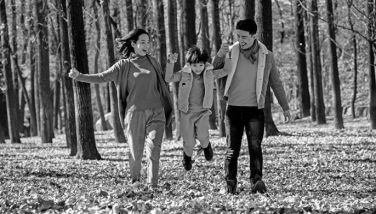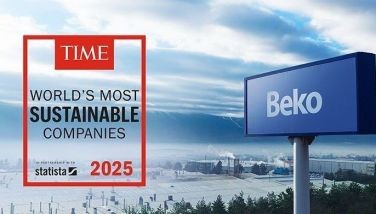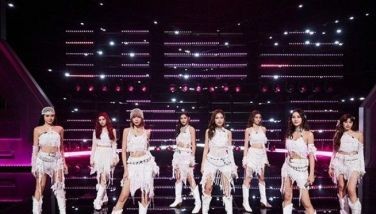Loyal to zip-up Godzilla, Japan wary of US remake
TOKYO — The big-screen Godzilla that scared and thrilled viewers in 1954 was an actor in a rubber suit with a zipper up its back. And many Japanese fans still prefer that monster over a Hollywood version made in terrifying, full 3-D computer-graphics glory.
"American Godzilla is just a giant iguana freaking out," says Mudai Nozaki, 30, who believes Godzilla is Japan's greatest contribution to cinematic history next to "Seven Samurai" and "Kagemusha" director Akira Kurosawa.
His reaction is surprisingly typical among Japanese who have seen the trailer of the film, titled simply "Godzilla," which premieres May 16 in the U.S. and in July in Japan. They wonder if the Warner Bros. remake will be a tribute or an embarrassment for Japan's monstrous legacy.
Japanese Godzilla-lovers say their iconic hero falls into a special phantasmal category called "kaiju," which have more imaginary, far-fetched traits than what they see as more mundane monsters like King Kong or Frankenstein.
And the Hollywood version is no kaiju, said Kazuya Haraguchi, who collects Godzilla goods, including a 100,000 yen ($1,000) complete DVD collection from Toho Studios, which came with a huge fangs-baring Godzilla head.
The 45-year-old technician for reel films says Hollywood already botched it once with a 1998 remake, directed by Roland Emmerich.
And almost everything about the new Godzilla is wrong again, from head to toe — how its arms are limp at its sides, how the scales on its back are too regular, even the shape of its head.
"The head is too small," said Haraguchi. "The voice is all wrong. It has to be much higher."
He shrugs off the creature in the new film as depicting what he pronounced as "Gadzilla," imitating an American accent — instead of "Gojira," (Go-jeeh-ruh), the way Japanese say it, a word that combines "gorilla" and "kujira," or whale.
"I hope the day will come when a Japanese director can make a Godzilla movie again for the world," he said.
In the original story, Godzilla emerged from the Pacific Ocean, a mutation awakened by nuclear-weapons testing on the Bikini Atoll, underlining Japan's emotional trauma from the atomic bombings of Hiroshima and Nagasaki at the end of World War II.
The story from Hollywood departs a bit from that script by having Godzilla stomping into San Francisco, instead of Tokyo, and confronting a flying monster that's not in the original. But the film stays true to the spirit of the original in many ways.
All director Gareth Edwards says he has done is produce an improved, more realistic Godzilla.
"In our film, for the first time, we will really see the actual animal again," he told The Associated Press.
"I think if you went around the world, and showed the silhouette of Godzilla, he'd probably be the most recognized character from movie history," he said. "Yet, as an adult, it's hard to point at a film where that truly did him justice. Especially with the digital tools we have available today."
Edwards says he grew up watching Godzilla films and has great respect for their deeper meaning, such as raising questions about nuclear weapons. But for many Japanese, the updated, more technologically advanced version of their hero isn't quite right.
Yumiko Yamashita, 40, a welfare worker, thinks Godzilla must be lovable — "kawaii," or cute, is the way she describes it.
She is proud it is drawing overseas respect but scoffed at U.S. depictions: "They make it too flashy. It becomes too American."
Minami Ichikawa, a Toho Co. director, acknowledged Japanese fans have been waiting for Godzilla's comeback because Toho hasn't made a Godzilla film for 10 years, after making 28 in the series.
One reason for his absence was that Toho felt the days were over for the old-style special effects, invented by the legendary Eiji Tsuburaya, centering on miniature cityscape models trampled by an actor. The next Godzilla film out of Japan, if there is one, will rely on Hollywood-style computer graphics, he added.
"Godzilla is an actor we rented to Hollywood," Ichikawa said, while declining to disclose terms. "The times are changing."
Haruo Nakajima says a true Godzilla must be a figure of pathos as it destroys buildings and bridges in its path.
He should know. He was the first Godzilla.
Nakajima, 85, was a stunt actor in samurai films when he was approached to take the Godzilla role. He had to invent the character from scratch, and went to the zoo to study the way elephants and bears moved.
The suit was so hot, especially under the glaring lights on set, the sweat he wrung from the shirt off his back would fill half a bucket, he recalled.
"I am the original, the real thing," he said, stressing that later Godzilla are mere imitations. "If Godzilla can't walk properly, it's nothing but a freak show."
The theme of his Godzilla was grander and more complex, addressing universal human problems, as it spoke to a Japan that still remembered wartime suffering, he said.
"It's not some cowboy movie," Nakajima said proudly, sitting among sepia-toned photos of him as a young man and Godzilla figures in his apartment.
"Everyone asks me to play Godzilla again," he said. "My Godzilla was the best."
- Latest
- Trending






























